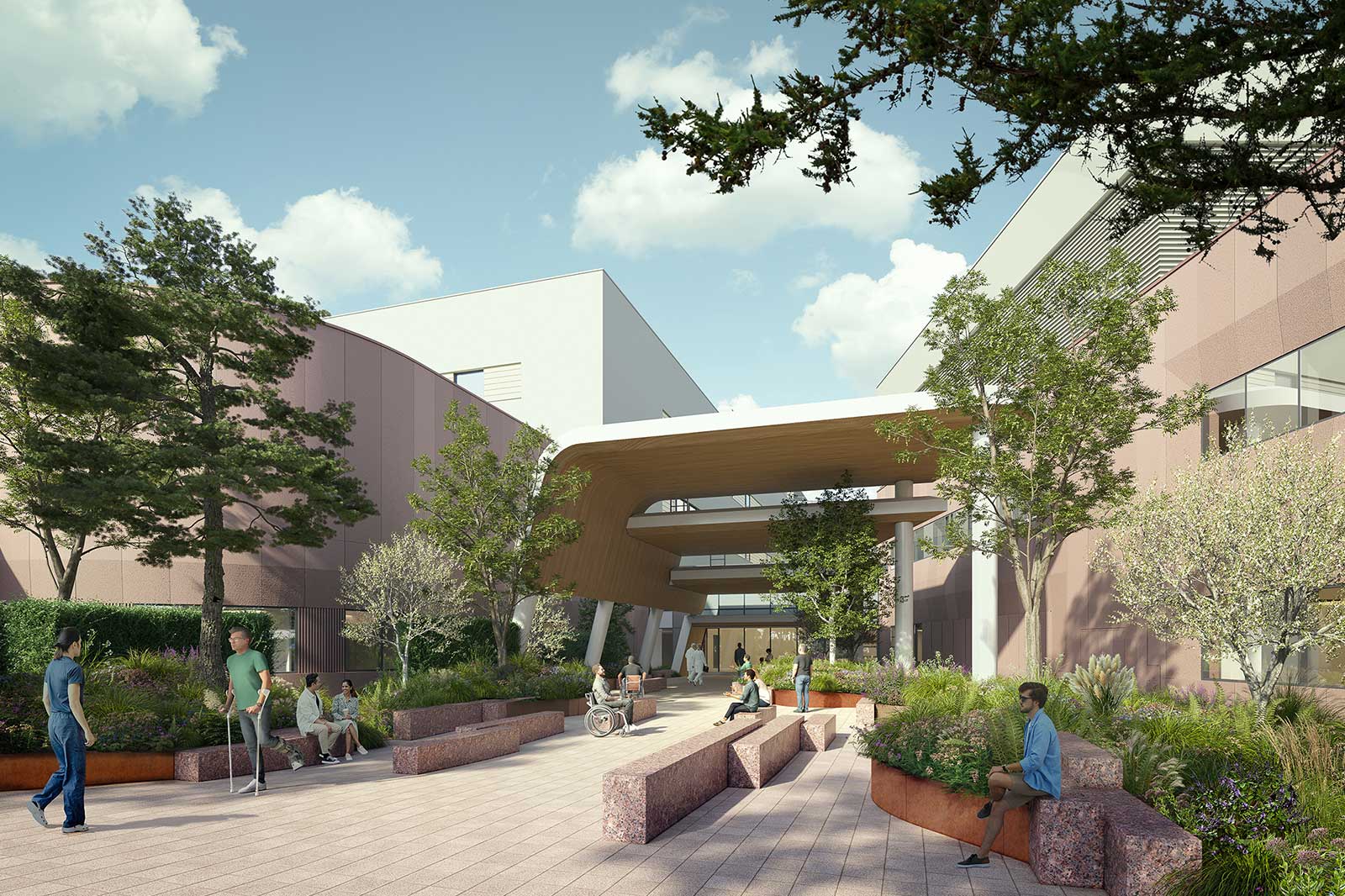Llewelyn Davies has an impressive track record in designing airports as well as
hospitals. For Bert McCabe, the two sectors are not as distinct as they might appear.
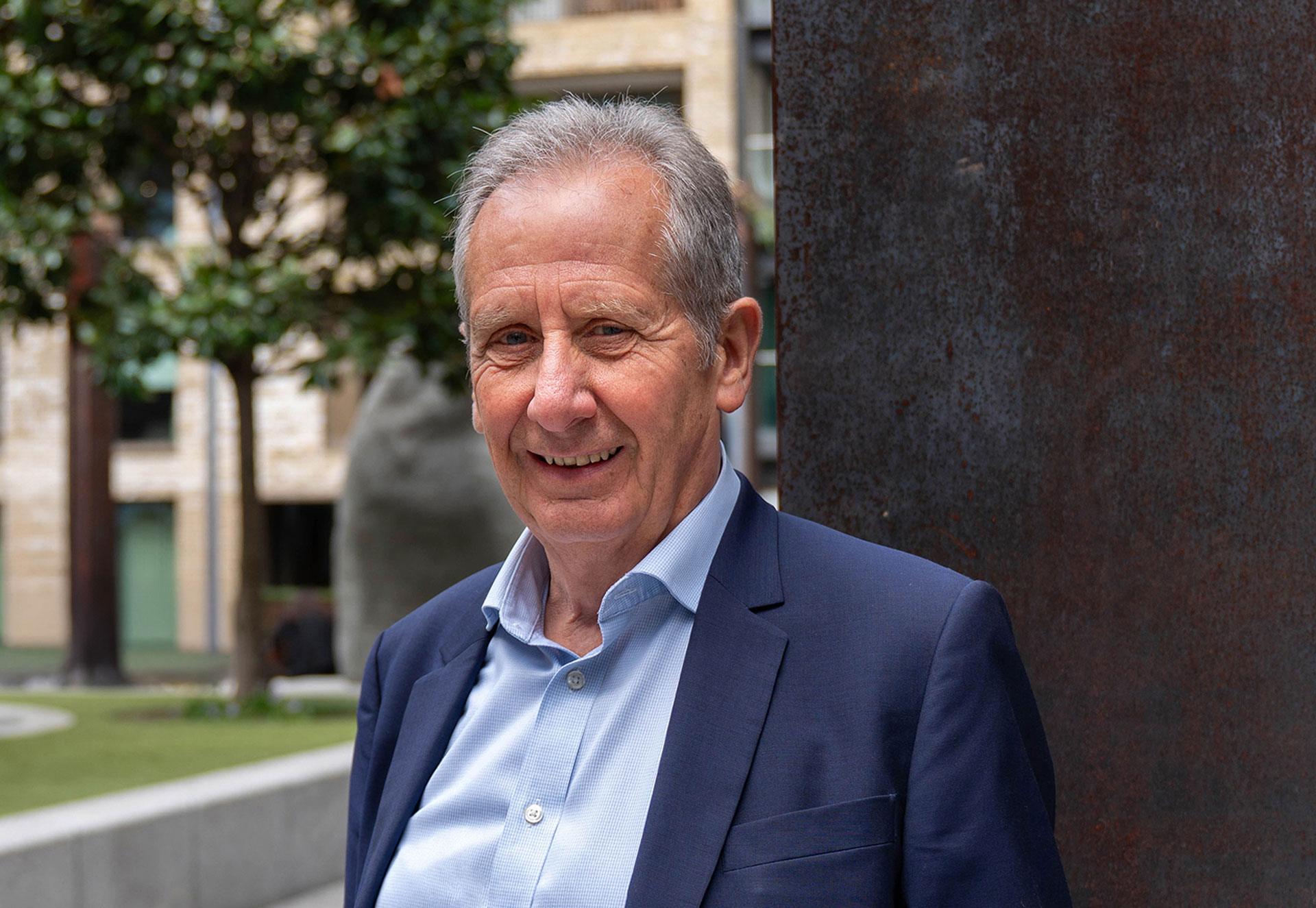
Bert McCabe, Director at Llewelyn Davies
Director, Bert McCabe has been associated with aviation projects for over 40 years. He explains how terminal design has evolved in that time to become far more focused on the quality of the passenger experience.
I joined Llewelyn Davies in 1991 having already worked on major aviation projects such as Hewanoora International Airport, St. Lucia and Macau International Airport, Macau with the British Airports Authority. My brief was to help diversify the practice’s business beyond healthcare and masterplanning by adding aviation to their sector portfolio.
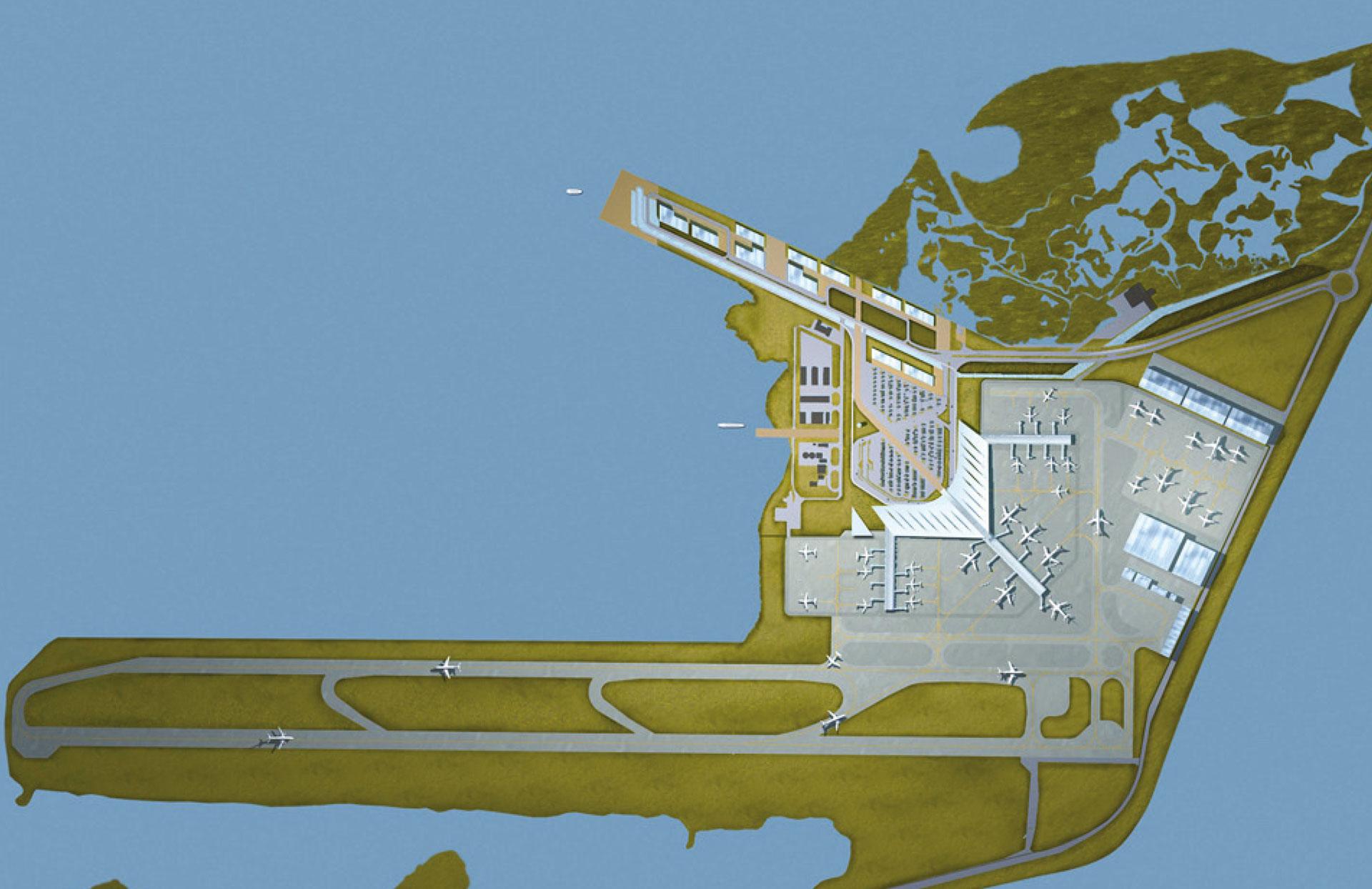
Norman Manley International Airport, Jamaica
Taking off
The practice’s entry into the sector proved extremely successful.
Our first project was a significant and meaningful beginning. It was just after the Lockerbie disaster and the brief was to introduce hold-baggage screening at Heathrow’s old Terminal 2. What started as an £11 million project expanded to the complete refurbishment of the terminal at a cost of over £50 million. And it came in below budget. The client’s project leader has been a friend ever since and worked with us on several other projects.
You don’t get the chance to design an airport every day, but we have done our fair share, especially in China. Our first airport there was a winning competition entry for the new Terminal 2 in Shenzhen, followed by Beihai, Xian and Chongqing. We have entered about nine competitions and won, I think, five.
Other major projects have included Norman Manley International Airport in Kingston, Jamaica and, most recently, the 250,000 square metre Terminal West at the Aeroport d’Alger in Algiers, Algeria.
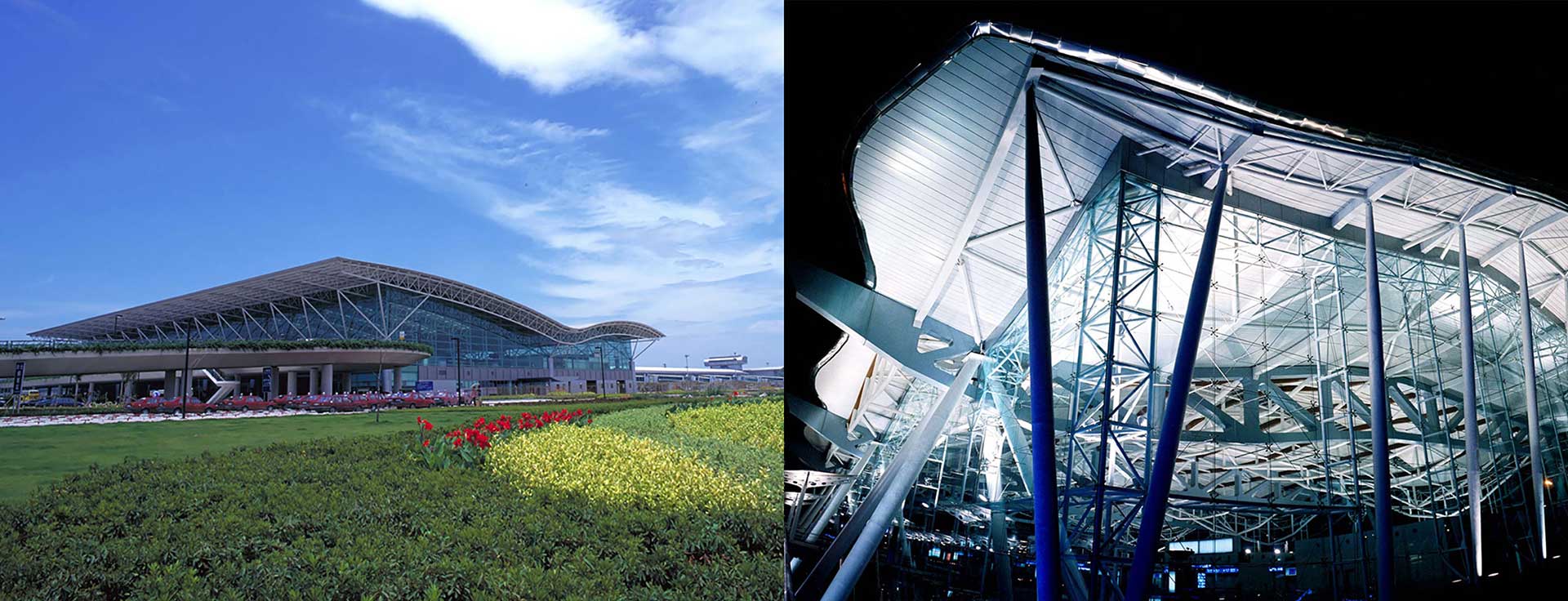
Left: Shenzhen Airport Terminal 2, China, Right: Chongqing International Airport, China
Currently, we’re working in the Caribbean, revisiting Hewanoora, and supporting a Canadian contractor in Turks and Caicos. We are also looking at Guyana in Central America, the proposal for the new Red Sea airport (KSIA) and we’ve been approached by an international contractor to work on a 100-185 million passenger terminals project at the new King Salman International (KSIA) Airport.
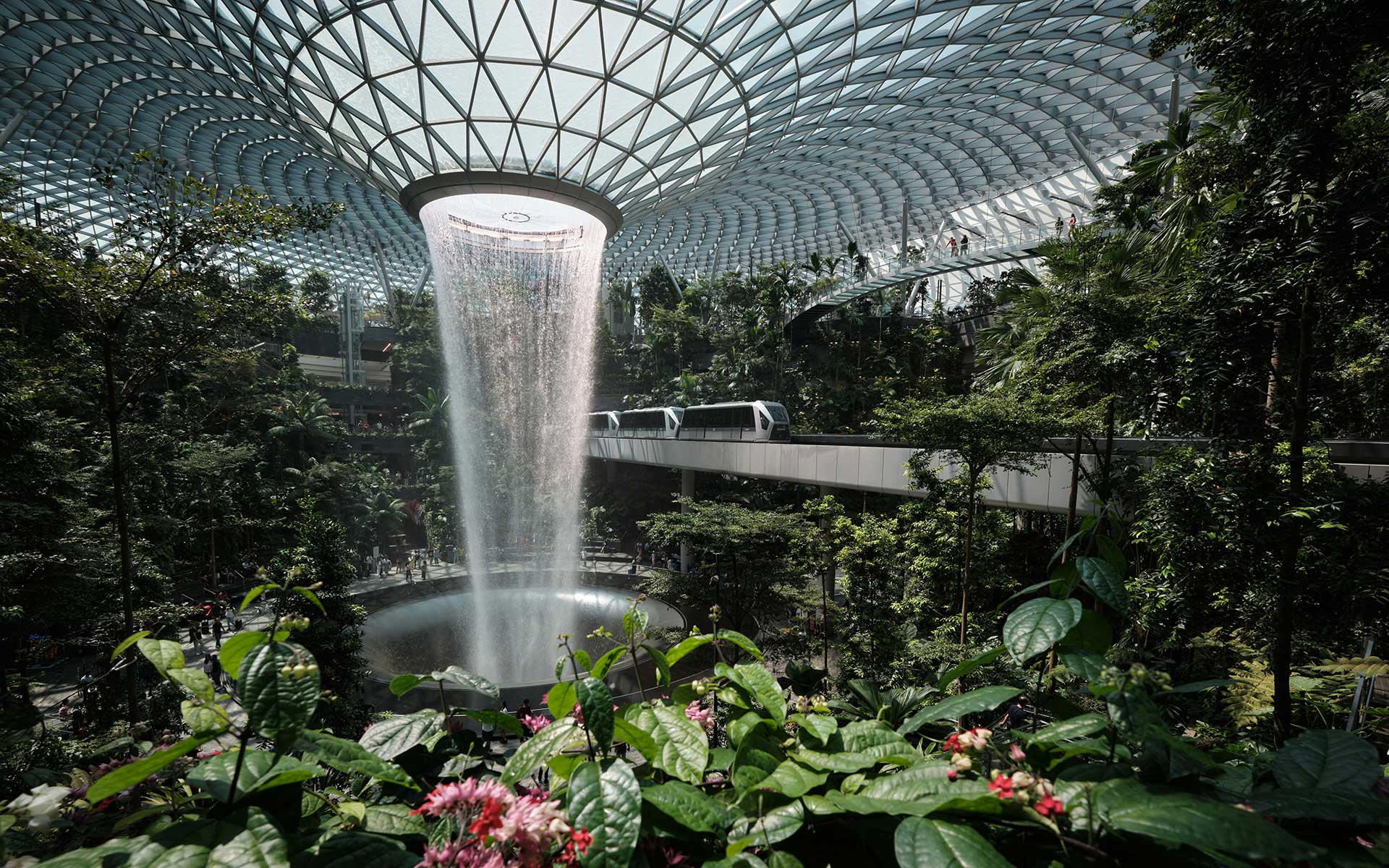
Singapore Changi Airport (Image credit: Joshua Kettle, Unsplash)
A changing landscape
Over my time I have seen enormous changes in airport design, and they have only accelerated in the last decade.
Originally, terminals were purely functional buildings for the transiting of passengers and cargo. These institutional facilities are now high-end revenue generators, especially at large hubs such as Heathrow, Singapore, and Abu Dhabi.
The key to maximising revenue is an improved passenger experience. Architects and designers are now tasked with delivering places where passengers are happy to spend time and money. This goes beyond providing commercial opportunities such as shops, restaurants, and bars, with interconnections to hotels. As expectations evolve, more and more leisure facilities are on offer. At Singapore Changi, for example, long-haul passengers can stop off for a swim.
Airport precincts and their surrounds increasingly include hotels, entertainment and leisure facilities, conference and exhibition complexes, shopping malls, offices and logistics and free-trade zones.
Passengers instead of patients
The emphasis on the passenger experience is where I see an overlap with the key drivers behind hospital design.
Both types of project involve complex buildings delivering essential services as efficiently as possible. Equally important, however, is the creation of an environment in which patients or passengers feel welcomed and cared for.
The experience and expertise that Llewelyn Davies has in each sector is mutually reinforcing.
Making it local
At one level, airports are simply parts of an international transit system for passengers and cargo. Traditional design reflected that, and, for many years, airport terminals looked very similar, wherever they were.
Recently, however, there’s been an increasing demand for distinctive design that reflects the unique culture and sometimes the history of the local community. This is true for major hubs where the priority is to get passengers (especially business travellers) into the retail areas as quickly as possible, and for smaller terminals, a unique and striking design can also send a strong message about a country’s progressive credentials.
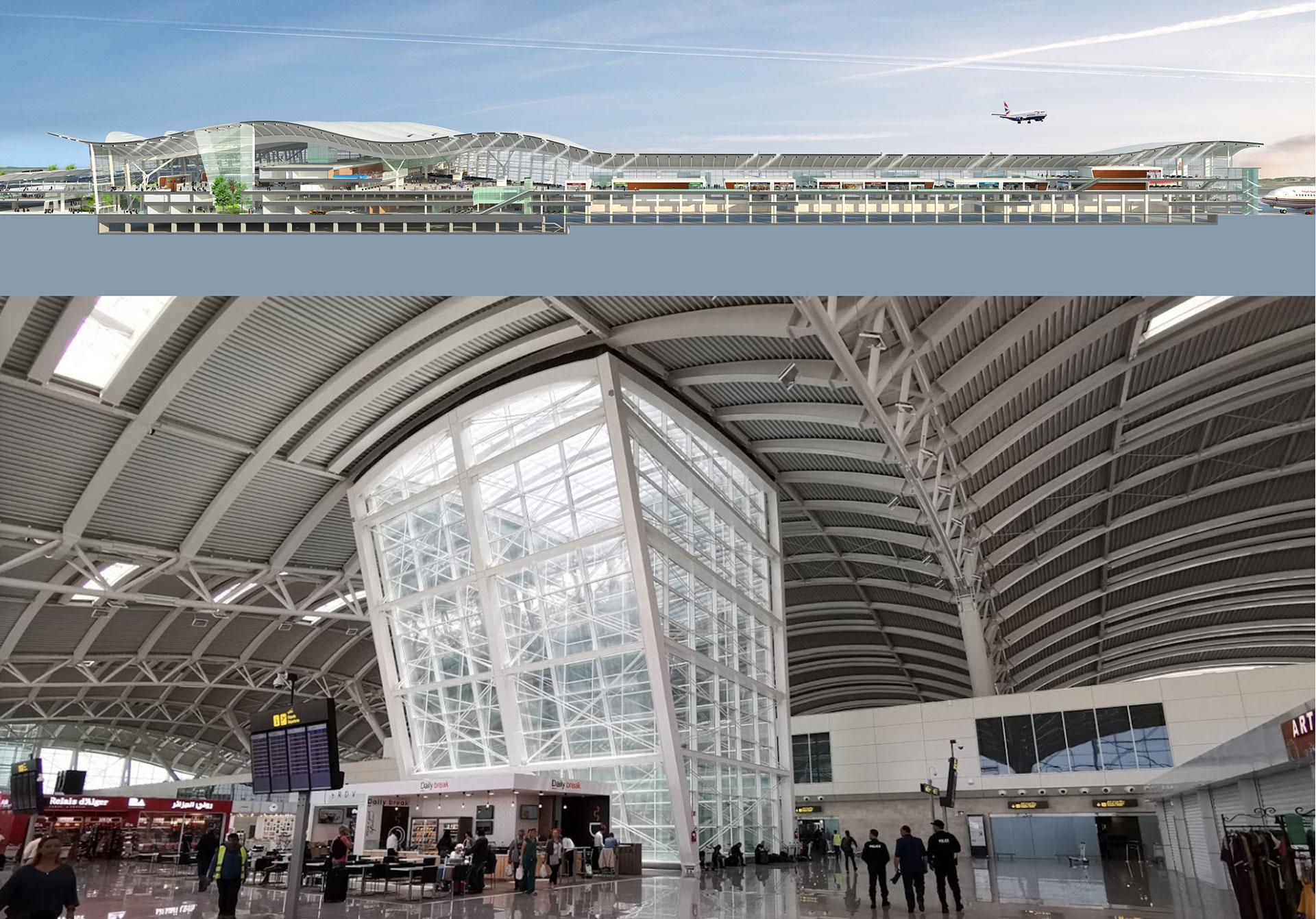
Aéroport d’Alger features eco-cells which draw natural light into the internal terminal spaces and improves sustainability.
Making it sustainable
Air travel and the environment is a contentious subject. Just look at the campaigns against airport expansion at London’s Heathrow and elsewhere.
As with any major project, however, there is a recognition of the need to meet LEED/BREAAM sustainability targets. We agree these with the client at the outset of any project. How we tackle them depends on the regional and local conditions.
The priority is the creation of a building with low energy consumption and maintenance costs. Where possible, we choose materials that are locally available, as well as being functional and sustainable.
The efficient use of water is crucial, especially in hotter, drier locations. That means optimising water retention and harvesting rainwater for toilets etc. Energy efficiency can be increased by using CHP systems that capture and reuse waste heat, and solar farms. We also look at enhancing biodiversity by planting trees, creating gardens, etc.
A recent example of our approach to sustainability is the new Terminal West at the Aeroport d’Alger in Algiers. This harvests rainwater for grey water purposes, draws natural light into internal spaces through eco-cells, and utilises solar glazing and shading.
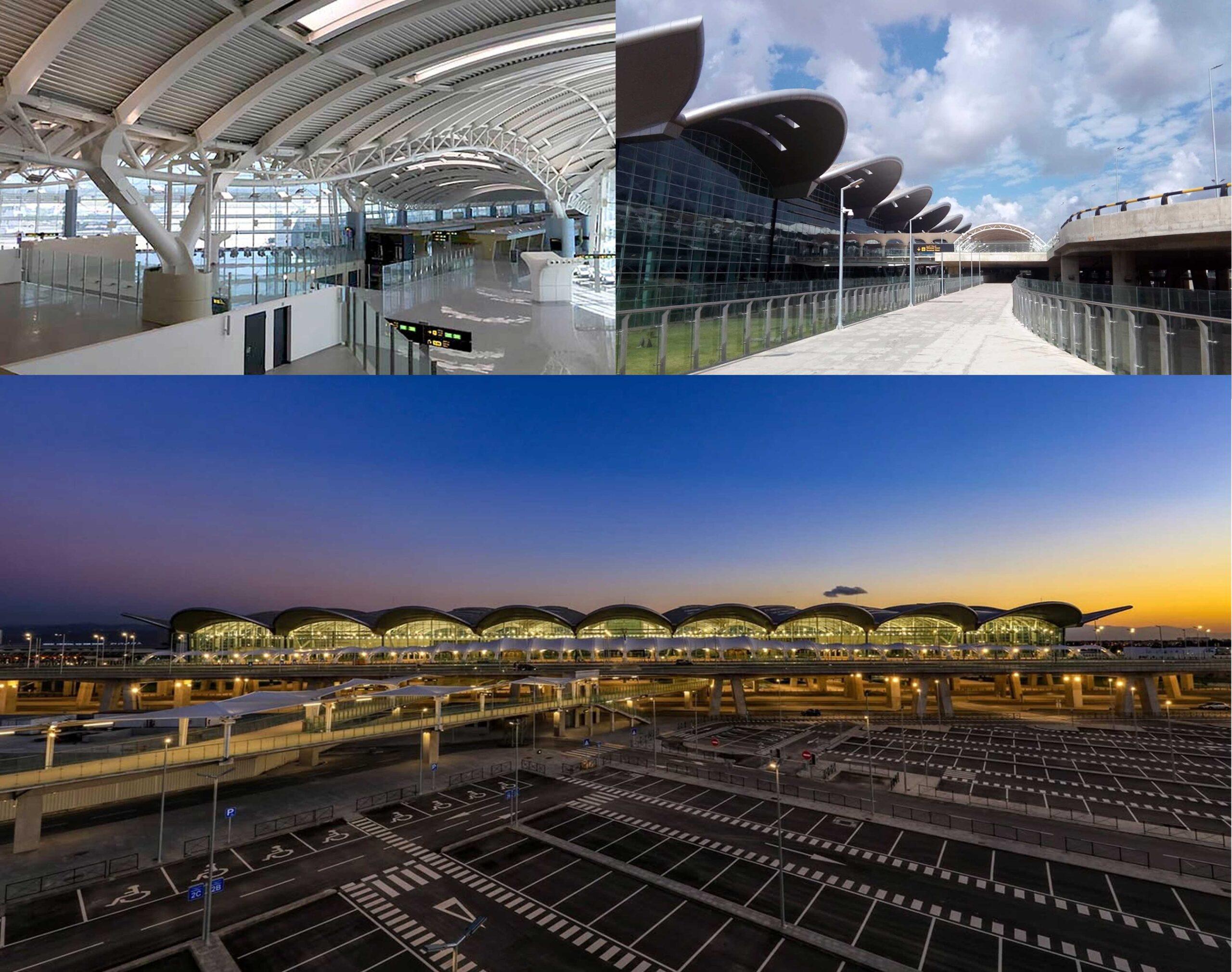
Aéroport d’Alger, Algeria
Looking forwards
Various factors will shape the future development of airport terminals.
Anxieties about terrorism mean that terminals now need to incorporate massively increased security screening procedures. This poses challenges in the shape of additional costs and increased space requirements. Appointing the right consultants early in the process can overcome these but they still have implications for the design.

Aéroport d’Alger, Algeria
Advances in smart airport technology have a more positive impact, making it progressively easy for passengers to negotiate every stage of their journey through the terminal.
The main drivers for the evolution of airport design will be the need to further enhance the passenger experience, and to meet ever more ambitious sustainability targets.
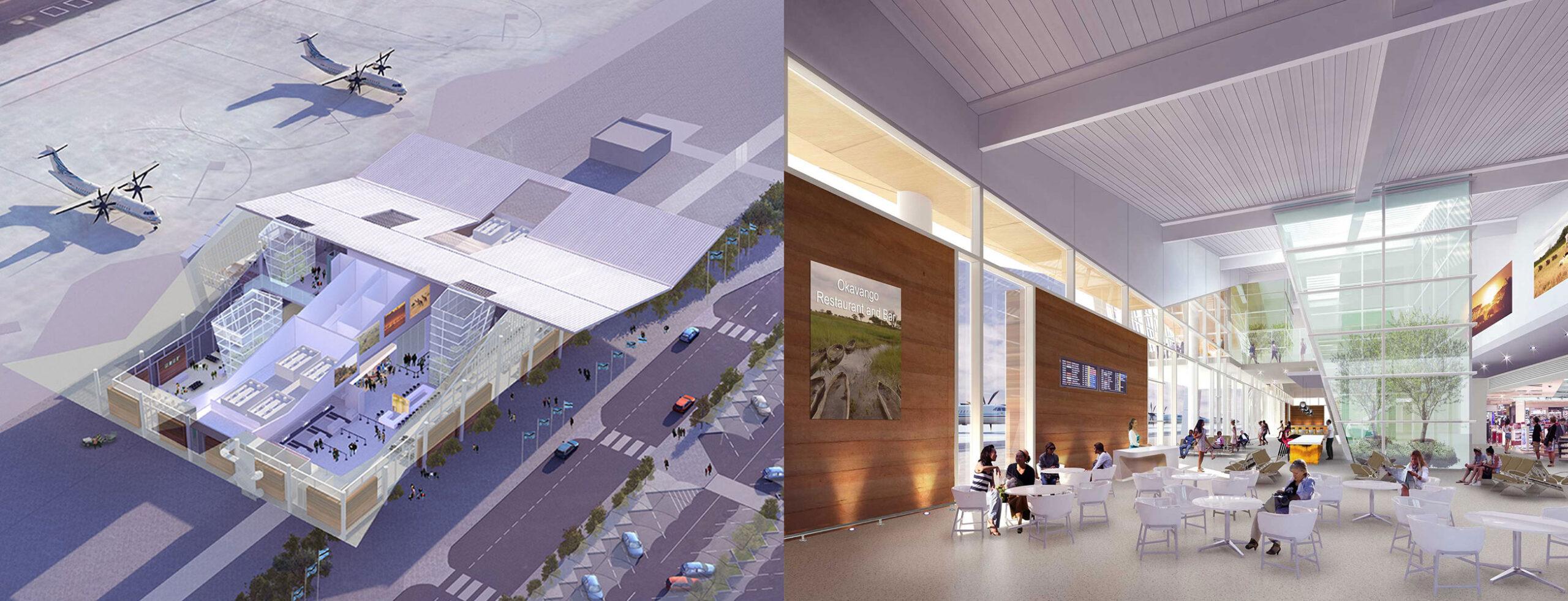
Maun International Airport, Botswana
Another continuing trend will be allowing for the expansion or upgrade of existing buildings through flexible design that can adapt to changing demands and technological advances. This flexibility already informs our modular design for terminals in developing countries to future-proof them against growing passenger numbers.
In over 40 years in this exciting sector, I have worked with some amazing people as clients and consultants across the world. Since joining Llewelyn Davies in 1991, my 34 years here have involved me in some extraordinary projects. Long may it continue.
Any further questions?
If you have any further questions about this article, please contact us via london@ldavies.com or 0207 907 7900
